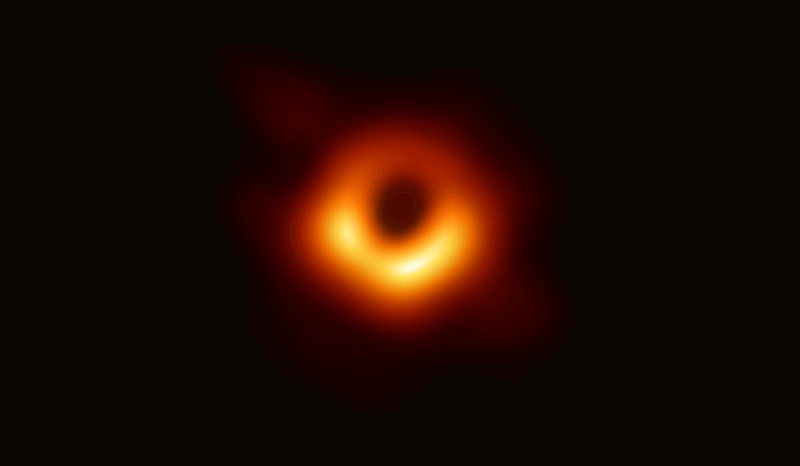Back in 2019, astronomers using the Event Horizon telescope accomplished something no one had ever done before: they took a picture of a black hole.

Photo Credit: Event Horizon Telescope Collaboration
Scientists had been theorizing that black holes might exist ever since Albert Einstein published his theory of general relativity in 1915. Einstein’s radical idea was that gravity wasn’t a force like magnetism but actually the result of massive objects curving space-time. Other scientists wondered if an object could become so massive that they actually punched a hole in the space-time continuum. These singularities would be so dense that nothing could escape from them — not even light. As a result, they would look like “black holes.”
Einstein himself thought black holes were an interesting theory but that they probably didn’t exist in the real world. But in the intervening decades, scientists have found a lot of evidence that black holes do exist — including that picture from the Event Horizon telescope.
But even those telescopic images don’t actually show the black hole. They show the ring of radiation around the black hole. We are left to infer that the black dot in the center of the image would also be lit were it not for the black hole sucking in all the radiation around it. We can’t actually “see” the black hole, but we can infer where it is from its surroundings.
Like the scientists studying black holes, pricing teams are often looking for something they can’t observe directly: What price are customers willing to pay?
You will rarely (if ever) be able to find data that gives you this answer directly. However, you most certainly can find data that indicates what the answer is.
And that’s not the only question that pricing teams can scour their data for. In fact, pricing and sales data is perfect to go looking for other things that can’t be observed directly. For example, you might want to know the answers to questions like:
- Which customers aren’t buying the volume that they could?
- Which customers are at risk of defecting to a competitor?
- What other companies and prospects should be able to buy your products?
- Which customers aren’t buying the range of products from you that they could?
In the same way that the ring of light indicates that something is missing in the center of the image, this surrounding data indicates that you might be missing revenue and margin that you could be getting.
Finding these black holes in your data is a little bit of an art. You also need some skills and the right technology. But with these elements in place, you can make some really discoveries that can help boost profits and revenue at the same time.
If you’re interested in hunting for black holes in your own data, we recommend that you start with the webinar on All About Price Optimization. It demystifies the core concepts behind price optimization and explains how it all works. You should also check out Using Pricing Analysis to Drive More Growth. It explores why pricing performance data is one of best sources of insight for improving a company’s go-to-market strategy and how the fundamental processes for effective pricing analysis can be applied to reveal many other strategic insights.
Yes, discovering phenomenon that you can’t directly observe takes some work. But fortunately, you don’t need a degree in astrophysics to find some truly amazing black holes that are hiding in your pricing and sales data.















